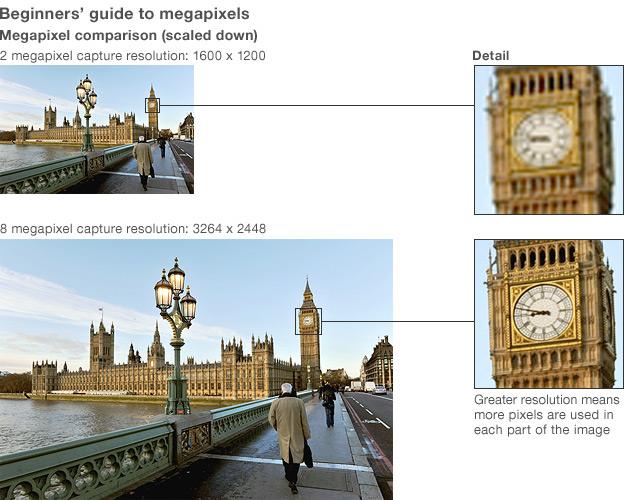Does a cameraphone really need 41 megapixels?
- Published

An enlarged photo taken with Nokia's new phone
The launch of a new cameraphone boasting 41 megapixels has caused a stir on its launch. But how many megapixels do people need?
Nokia's 808 Pureview has dramatically upped the ante on the number of megapixels on a cameraphone. Many smartphones today, like the iPhone 4S, have an 8MP camera.
Now Nokia has blown that standard out of the water. But are megapixels the key thing for consumers to focus on?
Photography enthusiastshave been warning, externalabout the "megapixel myth" for some time. In the myth, more megapixels means a better camera and a better photograph.
But that's not necessarily the case.
Damien Demolder, editor of Amateur Photographer, says that at first glance 41MP seems "ridiculous". Professionals doing billboard photography use 25MP cameras. For people wanting to share holiday snaps online, 8MP is more than enough.
But Nokia says people are missing the point. It is the way the pixels are used that is the real "quantum leap", a spokeswoman says.
The information from up to seven pixels is combined to create a new, single, better pixel, in a process termed "oversampling". The company likens it to how compact discs decode more data than needed so they can retain better quality data or information.
The 41MP figure will get people excited but that's not really what this is about, says Nate Lanxon, editor of wired.co.uk. "People will think 'wow' this is better than a digital SLR [single lens reflex]."
He argues the camera will still produce pictures at eight megapixels - but they will be sharper. "It's really about making better use of the available light and using software to enhance it further."
Nokia for its part, says the 41MP sensor will allow enthusiasts to be creative in zooming, reframing, cropping, editing and resizing without loss of detail. A smart function on the phone will reduce file sizes, making it easy to share and store the pictures while preserving the detail, Nokia says.
Demolder argues the large zoom will be "quite useful" for some users. Few cameraphones have an optical zoom lens - those that do tend to be clunky and look strange, he says.
Cameraphones have such tiny sensors - about a quarter of the size of a fingernail - that to group 40 million pixels together means they will be extremely small. Nokia counters that their sensor is actually five times the size of those used on 8MP cameraphones, so the pixels are the same size.
But to the critics image quality will be no match for a digital SLR. "Even on a bright day there'll be grainy bits in the sky when you blow it up big," Demolder suggests. Nokia again denies this, insisting that images can be blown up to poster size without becoming visibly grainy.
Lanxon says that cameraphones are increasingly about sharing. Nokia's new phone runs on the Symbian operating system, which is "far less capable" when it comes to apps than Android, Apple or Windows devices.
The megapixel race will not go away. But Demolder doubts that other manufacturers will feel the need to chase the 808 Pure View.
The Nokia 808 Pureview will cost roughly 450 euros but has no launch date yet in the UK.
The USP (unique selling point) advantage will not be in proportion to the technological leap or probably the cost, Demolder believes.
"Most people would find the zoom useful, though few will know they have it, fewer will discover how to work it and fewer again will remember to use it."

The image is illustrative and was not taken with two cameras with different numbers of megapixels. Megapixels are only one factor in determining the quality of an image - other key factors include lens quality and sensor size
- Published28 February 2012